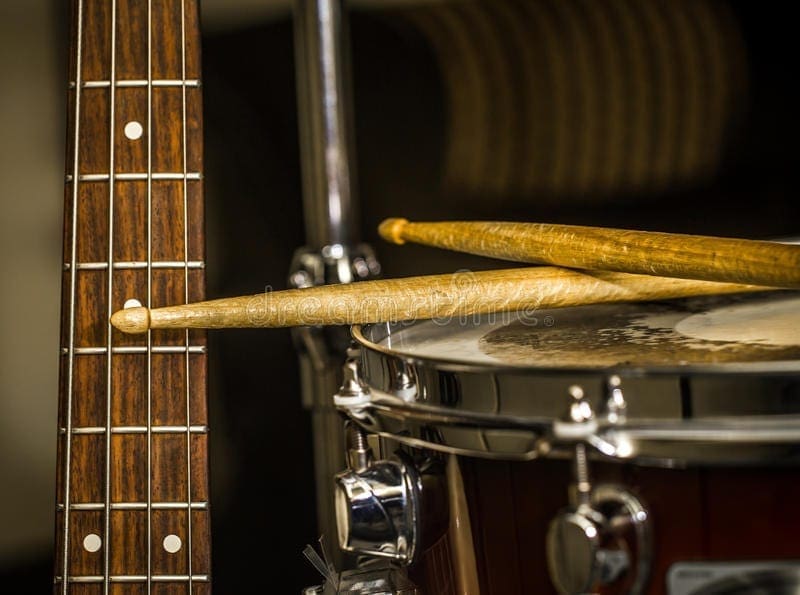There is one musician that every drummer should respect and get along with to be successful. That is the bass player. There needs to be a strong drums and bass relationship. A good bass player can make a drummer’s life so much easier – while a bad bass player can make for a long and painful gig. And my advice to bass players is that the one musician they should respect and get along with is the drummer. It is a Symbiotic Relationship like no other in music.
Establish a Relationship
I have had the pleasure of working with some very good bass players over the years. And one of the things that made it so enjoyable was that they understood their role in our musical relationship. Who is primarily responsible for maintaining tempo? The common answer is the drummer. However, from my experience, that is not the best answer.
Now that doesn’t mean the drummer shouldn’t be rock solid on tempo. I frequently am the one to count off the start of tunes. But the key element is that the drummer should always be at the same rock solid tempo as the bass. The reason I say that the bass is primarily responsible for tempo is that when push comes to shove – when things are not going well and the rest of the band is not in “the pocket” – I let the bass player know that “I am going with them”. The bass is the musical metronome that I am listening to and will continue to follow. Good bass players welcome and embrace this responsibility and it is the start of our ongoing musical dialogue.
Lead And Follow
Does the drummer’s bass drum pattern follow the bass line or does the bass line follow the drummer’s bass drum pattern? The answer is “Yes”. I am not saying that the drummer should always play the same rhythmic pattern as the bass. Nor am I saying that the bass player should always play the drummer’s bass drum pattern. But they frequently should match. And they both should change at the same time based on the musical form.
When there is not a drum chart available, I always ask for a copy of the bass part. Sure a trumpet part would let me see where the brass hits are. But I would rather have the bass part. I usually can tell from the bass line patterns the genre, style, groove and form of a composition. The drummer and bass player should continually listen to each other’s part and try to get them to match and complement one another.
UPDATE: I just played a concert which included James Taylor’s “Carolina on My Mind” arranged for orchestra accompaniment. The drum chart was the usual ballad style repeat after repeat after repeat. I immediately picked up on the ever changing bass line. So I got the bass part and wrote the bass rhythm cues in my part. It made a world of difference. Everyone in the rhythm section was on the same page musically and rhythmically. The bass player really appreciated it and I no longer had to guess what the bass player was going to play.
Don’t “Step On” The Bass
This is especially true when it comes to jazz. Jazz bass players do not want their bass line to be covered up with a thumping bass drum. Great jazz drummers have mastered the ability to lightly play or “feather” their bass drum. They also will sparsely play the bass drum only as accents to the musical line. One approach I often use is to vary the amount of bass drum I play during different sections of a tune. You may also want to see: Understand Music Form.
On most ensemble sections I will use the bass drum for accents or lightly “feather” with the bass line. For the “shout chorus” I will use a great deal of bass drum and double the bass line for dynamic intensity. During solo sections I often don’t play the bass drum at all. This brings out the string bass line and then adds texture and intensity when the bass drum re-enters. It’s not that jazz bassists don’t want the drummer to ever use their bass drum. They just don’t want them to use it all the time.
Conclusion
A strong relationship between the drummer and bass player is the foundation of a great rhythm section. A relationship based on mutual respect and shared musical interests. And a strong rhythm section is the foundation of a great band. Bass and drums is a symbiotic relationship like no other in music. Because it’s all about the bass.
You may also want to see: Three Basic Latin Beats to Cover Your Ass

